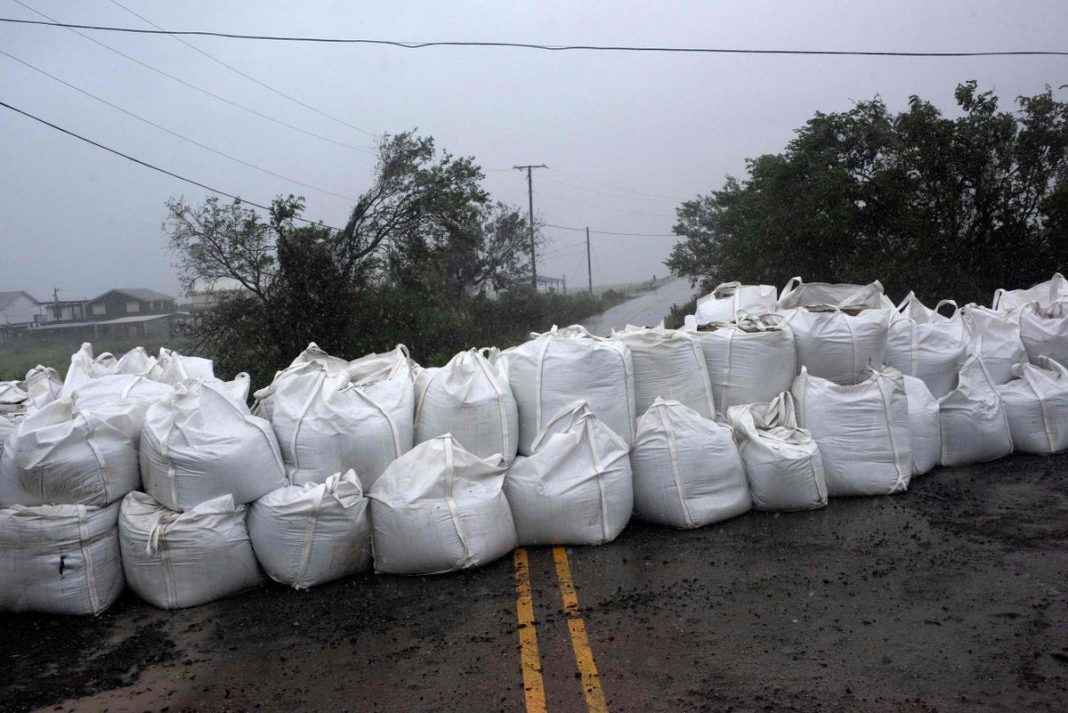TOPSHOT – Rain comes down at a wall of sandbags in Montegut, Louisiana before Hurricane Ida lands on … [+]
AFP via Getty Images
Hurricane Ida’s power as a category 4 hurricane with up to 150mph winds barreling through Louisiana as what Louisiana Governor John Bel Edwards said could be the worst storm to hit the state since the 1850’s, reflects government findings that, as devastating as 2020 was for the economy because of the covid shutdown, Mother Earth continues to warm at record levels.
The Energy Information Agency (EIA) reported recently that, “In 2020, as the country responded to the COVID-19 pandemic, CO2 emissions from energy consumption in the United States fell to the lowest level since 1983,” which is promising. But it only declined 11% and did not stop the forward march of global warming.
Global warming is causing these more severe storms and more extreme weather events in the U.S. and globally, including the devastating floods in Germany recently. Kevin Trenberth and his colleagues at the National Center for Atmospheric Research studied this and found that, “Human-induced climate change continues to warm the oceans which provide the memory of past accumulated effects. The resulting environment, including higher ocean heat content and sea surface temperatures, invigorates tropical cyclones to make them more intense, bigger,and longer lasting and greatly increases their flooding rains.”
Billions and billions of dollars in damage – plus lost lives and businesses
Headline in Discover magazine about National Atmospheric Research study linking extreme weather … [+]
Discover magazine
These severe weather events are causing billions of dollars in damage. “We track something called these billion-dollar disasters from the National Oceanic (and Atmospheric) Administration,” data scientist Olivia Martin of USAFacts said on my podcast recently, “and when you average out across decades, we’re seeing more of these destructive disasters each year.”
USAFacts.org is collecting and analyzing data from millions of government sources across local, state and federal levels on various topics from race to immigration to covid and healthcare more broadly to the economy, as well as for their annual State of the Earth Report on how the U.S. environment is doing. “We only use data from U.S. government agencies,” including county websites when necessary, she explained. “For a period of time, I was even collecting website from the California County Sheriff’s Facebook page, because that was the best place to get government data for that county. So, we were really doing the work of collecting and aggregating all this government data for the State of the Earth report. That’s also gathered across, the myriad of government agencies tasked with energy and the environment, ranging from the Department of Energy and Energy Information Administration, to the Environmental Protection Agency, the National Park Service and more…. for one complete view of our environment and energy.”
USAFacts.org 2020 State of the Earth report webpage
USAFacts.org
The National Centers for Environmental Information at NOAA reports that already in 2021 in the U.S. – as of July 9th and therefore not counting the Hurricane Ida 2021 yet – “there have been 8 weather/climate disaster events with losses exceeding $1 billion each.” They said the annual average from 1980–2020 is 7.1 events (CPI-adjusted), but from 2016 to 2020, the annual average is 16.2 events (CPI-adjusted). That does not include the hundreds maybe thousands, of lives and businesses lost during these severe weather events as well.
Climate change doesn’t wait for covid to pass
“Many measures of Earth’s health are at worst levels on record,” in 2020, a Washington Post story put it, despite global economies being dormant for nearly 18 months.
Almost nobody was flying anywhere, very few were driving anywhere, offices were eerily shuttered, and the general buzz of the economy was silent from March through December of 2020, and until nearly half-way into 2021.
Screen shot of Washington Post article on NOAA report that Earth’s levels at worst on record – Aug … [+]
WashingtonPost.com
Yet, here we are with another massive record-breaking category 4 hurricane cutting a swath through communities, endangering thousands, maybe millions of lives, and potentially causing billions of dollars in livelihoods, schools and businesses.
We have firsthand evidence that it’s not enough to bring our economy to a complete standstill for several months to stop climate change. We must do more. Now.




